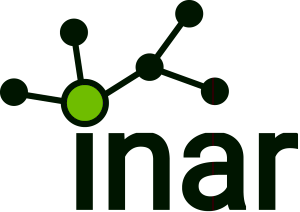Fillers are more than just cheap filling materials: They can also improve characteristics, such as stability, weather-resistance, and electrical conductivity, of numerous products. Many plastics would not be of any use without fillers. For the fourth time now, Ceresana analyzed the whole market for fillers: from ground calcium carbonate (GCC), precipitated calcium carbonate (PCC), kaolin, talc, and carbon black, up to specialties such as feldspar, mica, quartz, wollastonite, dolomite, and barium sulfate. The market research company expects global revenues generated with fillers to increase until 2023 to USD 31.76 billion. Thus, fillers belong to the economically most important raw materials.
Growth Market Asia-Pacific
Fillers are mainly utilized in paper, plastics, paints & varnishes, elastomers, adhesives & sealants. Regarding demand of the various regions of the world, significant differences are observable: While application in the paper industry accounts for a market share of 33% in Western Europe, the share is below 20% in Asia. Vice versa, manufacturers of elastomer products in Asia hold a share of over 32% on the filler market – in Western Europe the share amounts to 21%. Asia-Pacific accounted for around 48% of global demand for fillers in 2015. Due to above-average growth rates, demand in this region will presumably rise to just below 39 million tonnes. The second largest sales market for fillers is Western Europe.
Positive Trend in Case of Calcium Carbonate
With a market share of 34%, the most commonly used filler on the global market is ground calcium carbonate (GCC), followed by precipitated calcium carbonate (PCC). Until 2023, Ceresana forecasts an annual increase in case of GCC at rates of 2.7%. Worldwide, the largest application area for GCC is the segment plastics which is also characterized by above-average growth rates. The segment paints and varnishes ranked second, followed by paper. Calcium carbonates offer high chemical purity, a high degree of whiteness, a low refractive index, and low abrasiveness which makes them useful in the plastics industry. Possibilities of application range from PVC to polypropylene and polyethylene up to polyurethane foams. Many properties of precipitated calcium carbonate (PCC) are identical with those of GCC. The most important difference is the greater purity of PCC, which results in a considerably larger surface. PCC is mainly used in the production of paper which accounts for 47% of global demand.
Carbon Black Enhances Stability of Tires
Carbon black is not only used as a pigment: It is the third largest filler market worldwide, accounting for a demand of 11.4 million tonnes. The rubber and elastomer industry utilizes carbon black as reinforcing filler, mainly to improve abrasion resistance of tire rubber. Highly reinforcing carbon blacks are used in tire treads and conveyor belts. Semi-active carbon blacks are primarily used in tire side parts or air hoses. The second largest application area of carbon black as a filler are elastomer products for the sector industry & construction: This sector consumes around 1.3 million tonnes.
The Study in Brief:
Chapter 1 provides a presentation and analysis of the global market for fillers – including forecasts up to 2023: Demand for and revenues generated with fillers are provided for the world and each region.
Chapter 2 analyzes the 16 most important countries and their filler revenues and demand. Demand is split by individual applications and product types; furthermore, demand of the particular product type is split by applications. Additionally, all important manufacturers are listed according to countries.
Chapter 3 offers a substantiated analysis of the application areas for fillers: paper, plastics, paints & varnishes, elastomers, adhesives & sealants.
Chapter 4 examines demand for individual types of fillers: GCC, PCC, carbon black, kaolin, talc, and other fillers. Demand is clearly arranged for each of the 16 countries analyzed in chapter 2 and all world regions.
Chapter 5 provides profiles of the largest manufacturers, clearly arranged according to contact details, turnover, profit, product range, production sites, profile summary, and products. In-depth profiles of 109 producers are given, including e.g. 3M Company, Acron Group JSC, Aditya Birla Group, Alcoa, Inc., BASF SE, Bridgestone Corporation, Huber Engineered Materials, Imerys SA, Merck KGaA, Omya AG, PPG Industries, Inc., Rio Tinto plc, SCR-Sibelco N.V., and Showa Denko KK.
Further information: www.ceresana.com/en/market-studies/additives/fillers/

About Ceresana
Ceresana is a leading international market research and consultancy company for the industrial sector. For more than 10 years, Ceresana has been supplying several thousand customers from 60 countries with up-to-date market intelligence. Extensive market knowledge creates new prospects for strategic and operational decisions. Ceresana’s clients profit from implementation-oriented consulting services, tailor-made single-client studies and more than 100 independent multi-client market studies. Ceresana’s analysts are experts in the following markets: Chemicals, plastics, additives, commodities, industrial components, consumer goods, packaging, agriculture, and construction materials.
Learn more about Ceresana at www.ceresana.com/en
Ceresana
Mainaustr. 34
78464 Constance
Germany
Phone: +49 7531 94293 10
Fax: +49 7531 94293 27
Press Contact: Martin Ebner, m.ebner@ceresana.com
